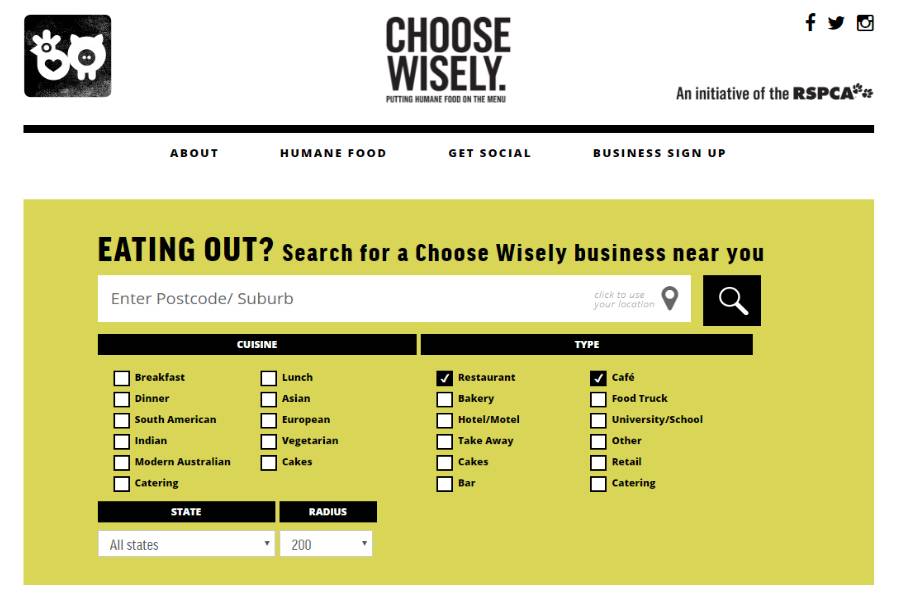Is it possible (or even a good idea) to build a fully-fledged directory website with listings and advanced filtering using WordPress?
What is a directory website?
A directory site is simply a website with a list of links. These links can be to pretty much anything! Jobs, real estate listings, businesses, brands, or restaurants – if you can think of it, there’s probably a directory for it. Popular directory websites include Yelp (business listings), Gumtree (classifieds), and Indeed (job listings). But directories don’t have to be huge to be successful. Many great directories have become the go-to resource in the smallest of niches.
You could make a directory of all the spaghetti locations in your city sorted by how much cheese they use. Or a directory of boat engine brands who use environmentally sustainable parts in their products. The trick is to figure out what people are looking for, and start there.
We’ve built many directory websites using WordPress, including:
- RSPCA Choose Wisely – restaurants that use RSPCA approved animal products
- Femeconomy – female-led brands
- The Green Hub – socially & environmentally responsible brands
Is an online store a directory? Not really. In a directory, the listings should be from multiple external sources, not just links to your own content or products. The directory is the middle man. Directory sites will often have minimal content, as it’s common for listings to link directly to an external website or a user-created page. This is part of what makes the directory model so appealing: If you can successful build a trusted brand, you don’t actually have to create the content yourself. Instead your audience trusts you to recommend other trustworthy sources for what they’re looking for.
WordPress is perfect for directory websites
WordPress was originally a blogging tool, built to manage a list of posts. As it grew over the years, the functionality has expanded greatly. Nowadays, this same technology can be harnessed to manage a list of just about anything! On your website you could have a list of posts, but also a list of portfolio items, brands or locations, which will behave almost exactly like posts. These are called ‘custom post types’. Any project with repeated items is a great fit for WordPress, and easy to manage moving forward. Everything will be archived and categorised neatly, the usual WordPress way.
Using WordPress to manage your directory
WordPress is very flexible when it comes to data. We’ve built directory sites where the listings are managed manually, directly from the WordPress dashboard. This is often the most straightforward approach. We’ve built other sites where listings data is managed in third-party software and automatically imported every few hours. Another method is to import listings from an excel spreadsheet. On Idventure, users and businesses can submit and manage their own listings from a custom dashboard.
Monetising your directory website
If you play your cards right, other businesses will want to be listed in your directory. This can open up many doors for monetisation. We’ve built directories that use each of the following monetisation methods:
Paid membership
All listed businesses are required to pay a recurring membership fee.
Featured listings
Businesses can pay extra to be featured at the top of listings or another prominent position.
Customer membership
Users have to pay to use your directory.
Affiliate programs
Businesses pay a fee based on how much traffic they receive from your directory.
Advertising
Businesses pay for their ads to appear on your directory website.

Tips for succeeding with a directory website
Never violate your audience’s trust
With directories, trust is paramount. If your directory starts pushing links that are off brand or too much paid advertising, your website is no longer useful and you’ll lose your audience. Remember, the whole reason people are on your site is because you’ve established your brand as a trusted source of information in a particular field, or you’ve created a useful tool. If your brand loses trust, your directory will be worthless. Always consider your monetisation options carefully and think about what it will mean for the user. If your directory is about the best burger joints in town, then paid listings for McDonalds start appearing, everyone will know you’re not delivering what you promised.
Remember, a successful directory is a win-win-win scenario:
- Users can find what they’re looking for.
- Businesses get exposure and customers.
- You get paid.
Learn how people are using your directory
How are your users sifting through your listings? This information is key to a successful directory website. Are they searching or browsing? Are they sorting or filtering? What will the categories be? For example, web design directory SiteInspire lets users filter website examples by different styles, types and subject matter. If your directory lists cheeseburger joints, will your users be trying to sort by price, location, ratings, or number of beef patties? Will they prefer to look at images or text? It’s important to have intuitive ways to sort and filter your directory listings, all of which are possible to implement in WordPress.
Automate as much as possible
The best way is to have your listees fill out a form when they apply or create a listing. If there’s a description or image that appears in their listing, collect it with the form. You want them giving you as much data as possible. The completed listing should appear in the WordPress back-end automatically as a draft, so all you have to do is tick approve or deny. Payment should also be handled automatically – the last thing you want is to be wasting time collecting payments manually businesses when they could just be paying via PayPal when they submit their application. We’ve implemented all of these features and more into our directory sites.
—
If you’re keen to start your directory website, get in touch with us today! We can help your business succeed with WordPress and many years of experience.









